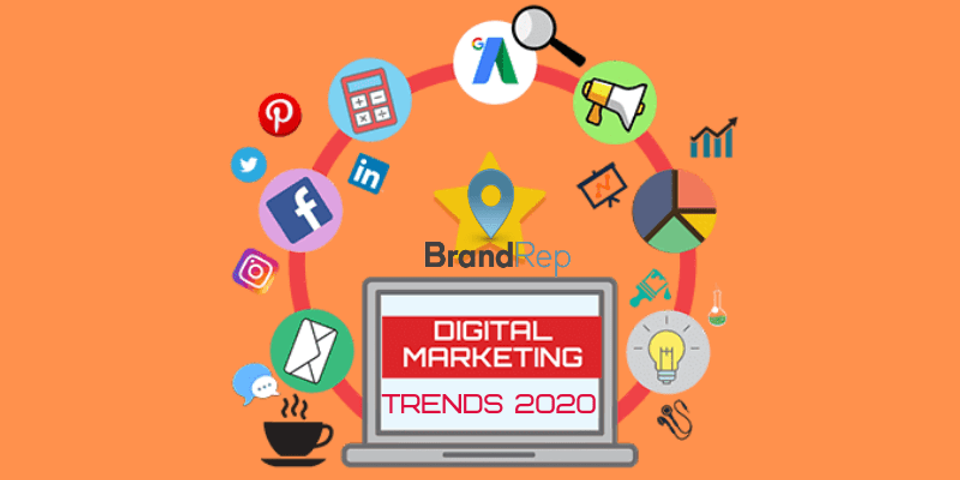Each year, we set our sights on small business trends that may impact our clients, brand, industry, and the economy. We pride ourselves on our ability to predict what’s next to serve our community best. As we rang in a new year nearly nine months ago, no one could have predicted the unprecedented nature of 2020: a global pandemic coupled with an economic downturn and sieging uncertainty certainly hadn’t made it to our shortlist. In business, it is often said that the unexpected should be expected. As such, our team at BrandRep recognizes through such spiraling, 2020 has already provided ample opportunity for massive learnings, pivots, and takeaways. If considered and carried out effectively, such education could lead us into a brighter, better 2021 and beyond.
Let’s take a look.
As an agency dedicated to the success of small business owners nationwide, we understand just how challenging such change has been. In this article, we hope to highlight how businesses can put such trends to work. Our team has analyzed economic reports from Statista and Inc., reviewed copious small business surveys, and worked within our network to provide the following list:
7 Small Business Trends for the Foreseeable Future

1. Employee Health must be a priority
Now more than ever, the health and wellbeing of employees and customers is the highest possible priority for small businesses – a ‘trend’ that will continue to impact nearly every aspect of operations for years to come. From workplace safety to health benefits, internal resources to clear COVID protocols, it’s paramount that your team feels necessary precautions have been taken, and support has been provided. Depending on your business, that can look like reorganizing structure to allow remote work, ensuring social distancing protocols in the office, offering flexible work arrangements, and highlighting your investment towards employee health and wellness.
Such efforts call for transparency, reassurance, and preparation. Your action towards prioritizing employee health will surely benefit your bottom line, enabling your team to do their best work with peace of mind.

2. E-Commerce is finally delivering on the early internet promises of the 90s
According to Statista, global e-commerce will grow to over $6 trillion within the next four years. As such, retailers nationwide have begun reallocating funds and focus from traditional brick-and-mortar storefronts to online efforts. Many small businesses have found that without the standard storefront, their marketing perspective has shifted. Social media and online marketing have taken center stage to better support their e-commerce efforts.

3. Time to Cater to Generation Z
Did you know that Generation Z makes up roughly 40% of consumers as of 2020? As we look towards trends of the new year, we recognize that now is time to ensure your small business considers the desires and buying behaviors of the youngest – but broadly influential – age bracket. Beyond that, business owners should think that Gen Z, made up of people born between 1995 and 2012, makes up the upcoming workforce. How do their priorities differ from previous generations? How can your business best cater to that?
According to an Inc consumer report, Gen Z-ers want brands to be socially conscious, diverse, and inclusive. In addition, they are inherently tech-savvy but still value face-to-face interaction. Given that, they are apt to lean towards businesses that highlight such causes near and dear to their Gen Z hearts.

4. Mobile is Mandatory
Did someone say tech-savvy? While we look towards Generation Z, we cannot forget that mobile-focused millennials still make up much of the workforce and consumer base. So let’s meet them where they are. Mobile.
How does your business leverage mobile? To best engage your millennial teams, your 2020 communication should utilize mobile-centric efforts: communication apps and internal instant messaging channels that help connect remote workers and mitigate the distanced dynamic while reaching younger teams where they are most active. Encourage team building, open communication, boost engagement, productivity, and more with the immediate feedback and integrative systems apps.
Externally, mobile is a trend that has consistently grown since conception and will continue to do so for the foreseeable future. According to Inc magazine, there are 3.8 billion smartphone users worldwide. So let’s reach them: Inc suggests utilizing geo-targeting to provide targeted ads – displayed on mobile devices – to consumers close to your business. Another critical element of mobile marketing is leveraging text messaging services to contact your client base. Not only will it keep your company top of mind, but it will allow you to share promotions directly and in a modern fashion. Moreover, creating an app that allows your customers to engage with your services and promotions easily might be a worthwhile investment.

5. Cash(less) is King
There is nothing new about cashless payments. People have widely shifted to card payments over the last 20 years; however, the number of non-cash payments continues to rise. Amid contamination concerns, many understandably opt for minimal human touch and interaction in a purchase – in the age of touchless delivery and increased e-commerce reliance, cashless is King.
Even though a study by Weave suggests that more than 35% of consumers are interested in a text payment option or the ability to pay with services such as Amazon Pay, PayPal, Apple Pay, Square, Stripe, only 4% of business offers this. While cashless payments are not without flaws – the possibility of excluding cash-loving customers, occurring fees for cashless services, and potential privacy concerns – it’s time to look towards payment evolution.

6. Back to the basics
Fear has run rampant in 2020 – understandably so. Most small business owners have white-knuckled the past nine months with significant uncertainty, at best. The best solution to date? Turn back to basics.
Those who will successfully navigate through the remainder of 2020 and beyond have turned focus inwards… going back to basics. By prioritizing business fundamentals, business owners have taken the necessary steps to streamline their practices, pivot, shift to serve their consumers, and support their internal teams. Keep it simple. Returning to earlier day staples like focus on customer service, developing stories and journeys, and boosting morale internally may seem rudimentary but will continue to serve businesses in the new year. At the end of it all, it boils down to what solution you provide, why you do it, and who helps make it possible.

7. The Customer is Always Right
The adage of the “customer is always right” rings true in 2020. Nothing is as valuable (or damaging) as a customer review or experience. Consider how your business and internal team prioritizes the customer – at every stage of their buying journey – in hopes of a positive service experience, glowing review, and ultimately, raving fan.
Leverage powerful review gathering and publishing tools, power up online reviews, and consider taking a closer look at previous customer experiences for gaps and holes. Consider the shift 2020 has pushed on service specifics, and ensure your online efforts reflect your pivoting protocol.
While your ideal customer may find your services online, a lack of reviews or published experiences may deter them from the next steps. Fan & Fuel reports that 92% of people hesitate to purchase when there are no reviews available.
Conclusion
We couldn’t have predicted what 2020 had in store, and while there is certainly a light at the end of the tunnel, such uncertainty remains. As such, we will continue to prioritize our efforts towards sound trends and takeaways to better small businesses for a brighter bottom line, and 2021… come what may.










